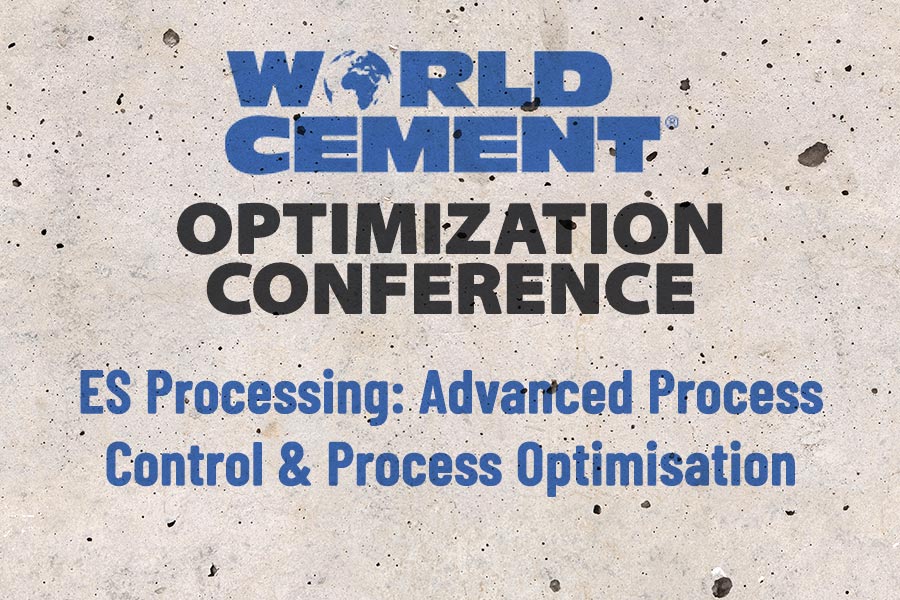
03 Dec Optimisation 2020 Online Conference
ES Processing: Advanced Process Control & Process Optimisation
The cement industry is facing new challenges in the form of rising competition, ever-increasing raw material and energy prices, and the need to comply with stricter environmental protection policies – challenges that can no longer be tackled with the traditional tools used by the industry prior to 2014.
ES Processing is helping the cement industry meet these challenges by bringing it into the digital industrial revolution with advanced process control and artificial intelligence. The company’s proprietary solutions are helping to enable the cement industry to make intelligent use of big data and transform it into algorithms and models that can serve as an ‘autopilot’ to achieve a new level of process optimisation, and enhance quality and productivity and reduce energy consumption.
Reliance on inefficient manual processes
While Advanced Process Control has proven its capability to maximise production efficiency and product quality, cement manufacturers have been unable to take advantage of it. Continuously measuring the quality of cement manufacturing in real time has been an impossibility. As a result, cement manufacturers have had to rely on a manual sampling process performed on a finished product.
Adjustments have also been a manual process. Based on test results, the operator must select new combinations of mill fresh feed and separator speed hoping to achieve target fineness, based on their own experience and personal judgement rather than hard data.
High standard deviation from target quality
The imprecision of a manually controlled process usually results in high standard deviation from the quality target and a non-uniform product. Quality can therefore suffer, and higher-than-necessary electricity usage and greater wear and tear on machinery can result. ES Processing enables cement mills to leverage data-based APCs to assure consistent product quality.
Applying the technology to cement:
How ES Processing’s Cement Mill Optimiser (CMO) works
Phase 1 – Modelling & Validation
Data input: Big data based on historical process data and onsite tests are combined with laboratory data to build the Soft Sensors that can accurately predict fineness and residue based on the full range of performance parameters.
Soft sensors: ES Processing’s soft sensors are sophisticated models formed by combining multiple data-based algorithms adopted from machine learning and based on linear and non-linear identification techniques, PLS, and genetic algorithms. They are able to predict very accurately the Blaine and residue every 30 seconds.
MPC: The company’s MPC is a complex multivariable model based on transfer functions that ES Processing builds by performing different impulse tests for each mill. Handling complex plant dynamics including long-dead times, non-minimum phase behaviour, constraint handling, hierarchical and weighted optimisation, and predictive control, it is able to adjust process manipulated variables such as separator speed and fresh feed every 30 seconds.
Prediction Validation: The customised model produced by ES Processing’s algorithms is then validated through extensive testing on both historical and live data.
Phase 2 – CMO Operation
At each interval, the Soft Sensor predicts the Blaine fineness and the residue value based on several inputs of mill measurements. The Blaine and residue inferred values are sent as measurement inputs along with the current rejects to the Model Based Optimiser or Model Predictive Controller to calculate new optimum setpoints for process manipulated variables such as separator speed and mill fresh feed.
Using this approach, mill operation is consistently pushed to the operational ideal targets due to the continuous prediction of Blaine fineness combined with the optimal adjustments of operating conditions.
ES Processing Cement Mill Optimiser system is a parallel intelligent solution that acts as an autopilot for the cement grinding circuit. It optimises the cement quality and increases the overall production by keeping the cement product fineness closer to the ideal targets, or in other words keeping a low standard deviation of the final product particles volume. In addition, it decreases cement rejects vis-à-vis the consistency of the final product fineness, thus reducing specific electrical energy consumption.
